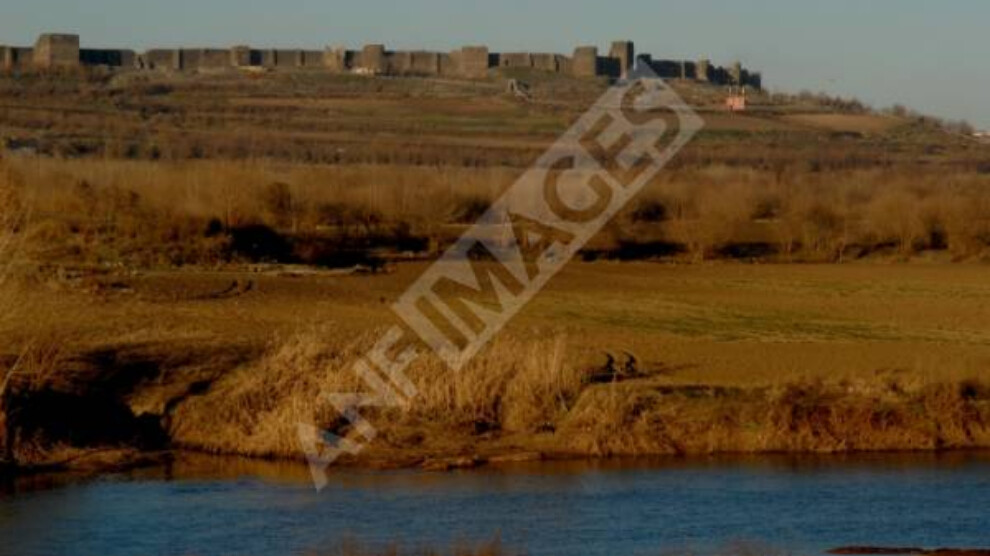'Attraction centers' to rise instead of trees in Hevsel Gardens
The 8 thousand year old green heaven in the Mardin Gate, Kırklar Gate and Yenikapı triangle next to the Tigris River will be destroyed for unearned income.
The 8 thousand year old green heaven in the Mardin Gate, Kırklar Gate and Yenikapı triangle next to the Tigris River will be destroyed for unearned income.

Hevsel Gardens, on the UNESCO World Cultural Heritage List since 2015, has been declared as a “Special Project Site” on December 28 in accordance with the (ğ) clause of the 1st paragraph of the 2nd article of the Statutory Decree numbered 644, and the 9th article of the Construction Zoning Law numbered 3194, and the approval of the Ministry of the Environment and Urbanization. Although the project must be made public and published officially, there has not been any official statement on the project since, leaving history and ecology under threat.
Located on a field of 10 thousand m2, Hevsel Gardens carry the signs of Hittite, Hurri-Mitanni, Assyrian, Arami, Urartu, Scythian, Medes, Persian, Macedonian, Parthian, Armenian, Roman, Sassanian, Byzantinian, Emevi, Abbasid, Sheikh, Hamdani, Mervani, Seljuk, Inals, Nisans, Artuqi, Ayyubid, Mongol, Aqqoyunlu, Safavid and Ottoman civilizations and have been used as the granary of the city since ancient times.
HEAVEN ON EARTH: HOSER
The name of Hevsel Gardens, which has been an inspiration to many legends and songs with its beauty and fertility, is said to have evolved from Hoser (dense woods). According to a legend, Prophet Mohammed sees the a dense wood during his ascension and says that “This must be the heaven”. Another legend suggests that Esfel (one held in contempt) is the origin of the word Hevsel. Accordingly, forty thousand people in Nusaybin fleeing form Iranian forces seek refuge in Amed but are forced to settle somewhere far away from the city. These people were referred to as Esfel, and are seen as those that cultivated the land and created the gardens.
MORE THAN 180 BIRD SPECIES LIVE IN HEVSEL GARDENS
More than 180 bird species including sand martins, little egrets, corn buntings, ortolans, magpies, owlets, kingfishers, eagle owls and red falcons, in addition to other species such as otters, hedgehogs, red foxes, wild boars, squirrels, lizards, snakes, toads and Euphrates turtles -that only live between Euphrates and Tigris rivers and lay their eggs on the banks of the Euphrates- live in Hevsel which is listed as an Key Biodiversity Area (KBA).
AN AREA OF 14 HECTARES WILL BE OPEN TO SETTLEMENT THROUGH FAKE REPORTS
Havsel Gardens, which rise on an alluvial soil brought by the Tigris River for centuries, are under the risk of floods and have been designated as ‘special recreation zone’ by the Ministry of the Environment and Urbanization without any consideration of its ecologic, geographic and historic nature. “Attraction centers” and mosques are expected to rise instead of trees in Havsel Gardens. Even though 14 of the 32 hectares of ‘Suriçi Reconstruction Zone Project’ are banned for construction, the Geological Survey Report of the ministry has re-designated this area as ‘suitable for construction.’
A SIMILAR ATTEMPT IN 2014 WAS DEFEATED BY RESISTANCE
A similar construction attempt took place in March, 2014 when the Ministry of the Environment and Urbanization designated Hevsel Gardens as ‘construction reserve area.’ However, the youth and people of Amed set up tents in Hevsel Gardens to protect the ecology and the 8 thousand years of history of the area. Hundreds of people from Amed and across Kurdistan saved Hevsel Gardens from destruction thanks to their protest, but the destruction of the gardens is intended once again now with a recent statutory decree based on the State of Emergency declared after the coup attempt on July 15. The AKP government’s project is expected to force hundreds of animals to live amongst concrete blocs and to destroy the green area referred to as ‘the lungs of the city’ for the sake of unearned profit.